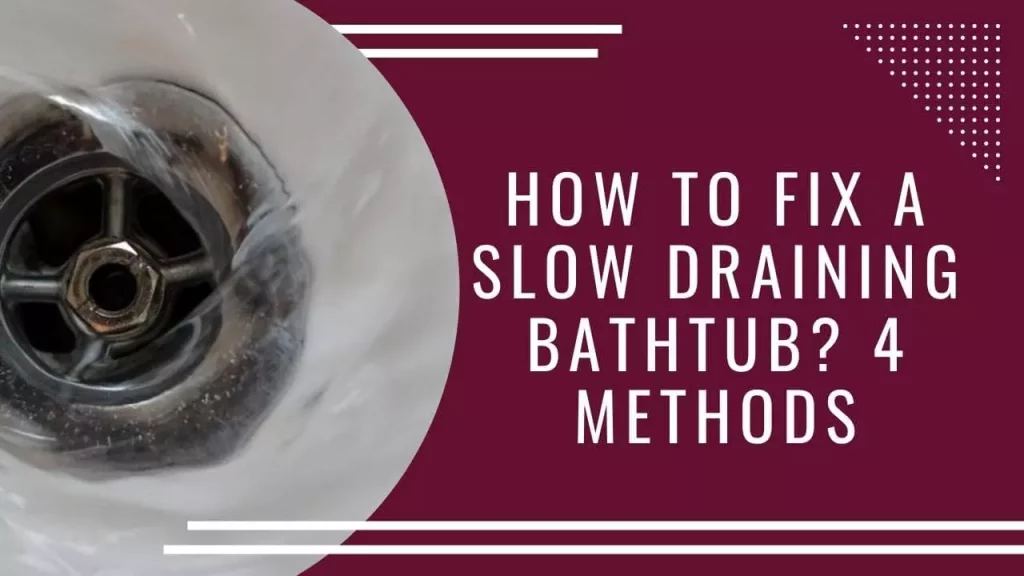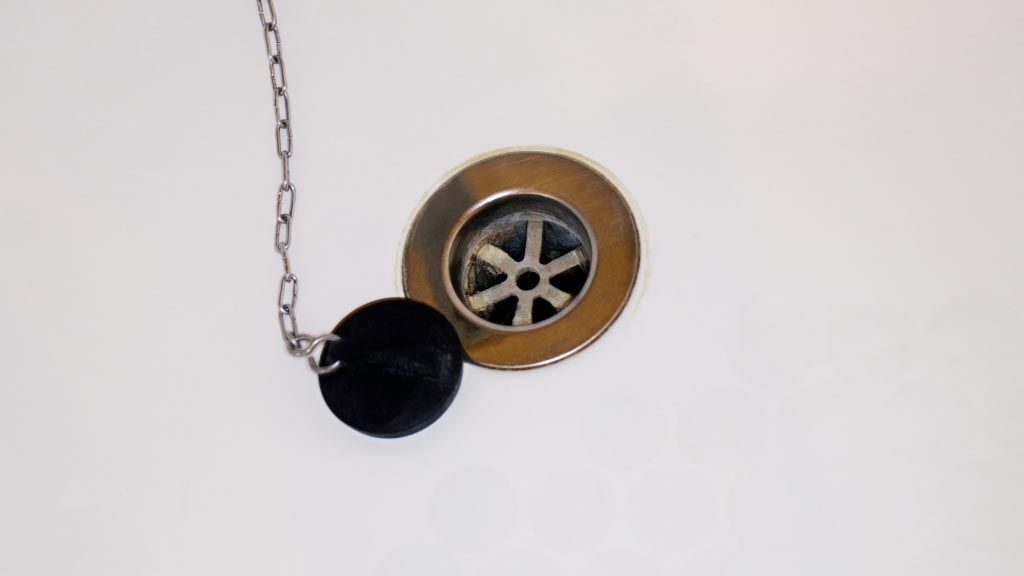
A quick and best bathtub needs more effort to maintain cleanliness and may result in morning shower conflicts. A slow drain might throw up your daily schedule if you share a bathtub, making it more difficult for everyone to have a shower before leaving the house. Aggregated water is also a fertile ground for a variety of problems that can harm your body. Washing the drains is one solution to the issue.
Have you really tried cleaning a bathtub that drains slowly? Restricted circulation not only implies that practically every bath or shower creates a soap scum ring, but also indicates that ordinary cleanup takes more time as you slowly rinse out the tub after this round.
There are several causes why your bathtub flows quickly. Fortunately, several simple fixes may keep you from having to employ a plumber. Some of the following factors can cause a clogged bathtub drain.
- A failure to clean drains regularly.
- A deposit of soap, body oil, and other showering beauty aids an accumulation of hair.
If this seems like your problem, don’t grab for the corrosive retail location commercial cleaning agents just yet; there are other ways to flush your bathtub drain properly. To physically clean your drain, you must first remove the drain stopper to get access.
Drain Stoppers Come in a Variety of Shapes and Sizes

Drain stoppers come in a variety of shapes and sizes, and they’re commonly used to prevent water from flowing into your tub. Whatever you have may need to be eliminated until you can be made to remove it. To extract your special type of stoppage, follow these instructions:
Among the most prevalent varieties of bathtub stoppers is this one. The head of the drainage has a little knob that serves to establish and close it. Disconnect the stopper cap and the wrench to release this stopper. This allows you to remove material caught in the filtration horizontal bars. You can easily eliminate any hair or material that is obstructing the drain when you have accessibility.
Drain stopper is a common occurrence in older Sacramento homes. This sort of stopper is held in place by a lever connected to an expansion plate, which may have to be detached before the plug may be withdrawn. When clearing this sort of stopper, it’s advisable to choose a hot water flush to assure that any remaining debris is flushed down the drain.
Since there is no obvious process to extract it, this is typically regarded as the most difficult obstruction to work with. This stopper, unlike a drop stopper, cannot be withdrawn or unplugged. You might be able to eliminate the stopper by holding the base while disassembling the stopper. You’ll have access to any detritus after the plug is removed. The base could also be removable if you need to reach deeper. Do one of those five devices to keep your drain empty once you’ve cleared it.
To clean slow drains, you might have to go deeper into the pipe after removing the drain stopper. The approaches listed below can assist you in completing the task.
A rigid wire with a hook twisted into one end, including a clothes hanger, could be used to climb inside pipes and pull away clogs. However, avoid pushing the material into the pipe as this will exacerbate the obstruction. Clean the drain using lukewarm water or a vinegar and baking soda solution after you’ve eliminated the hair and other debris. Both procedures are safer and more efficient than many retail location chemical cleansers.
Darting a tub can be a good technique to reach deep into your pipes and remove a lot of obstructions. However, even if you have one, you must know how to use it properly to avoid causing or exacerbating damage to your pipes while attempting to remedy your slow draining.
Also read: How to Remove a Bathtub without Damaging Tiles
Do You Have a Slow Drainage system Anymore? And want to repair a slow draining bathroom sink?
If your drains were always slow after you’ve tried any of these solutions or if your bathroom and sink are also running slowly. It could be a sign of something more severe than a plugged pipe. It could be an indication of a clogged sewer line, which will necessitate the services of a plumber like Quick Drain & Sewer. Do You Even have Slow Drains Anymore?
Trenchless sewage line maintenance and installation is our specialty, as it is a less invasive technique than conventional excavation methods and even if their sewer lines aren’t, changing earth, wear, and insufficient maintenance can take their toll.
These pipes, which are composed of clay, cast iron were designed to last a long time, but still, nothing stays forever. If your best efforts to clear clogged drains in your home have failed, contact Express Sewer & Drain, and we’ll help your pipes run freely once again.
What are the Causes of Slow Drains? And how to fix a blocked bathtub drain

Slow drains can be caused by a variety of things, but the most common culprits in a bathtub are bath items and loose hair because usually bathtub blocked by hair and bathtub blocked by dirt. Bath salts and complexion bath fizzes can make a plain bathtub feel like a spa, but they can also cause a steady accumulation of material in the pipes, restricting water flow. When a nice odor sits in the sewer for weeks, it might become significantly less good.
Although the internet contains a plethora of sewer cleaning home solutions, not all of them are safe and reliable. If simple, started trying methods that don’t work, bring in the pros. Specialist drain cleaning technology is sometimes required to clear a blockage, and when used incorrectly, it can cause damage to your pipes. For an incredibly quick tub, a plumber is the only way to go. Before you call a plumber, apply these best products for slow draining tub cleaning methods:
1. Drain Catch Must Be Cleaned
Take a minute to wipe out the sewer and catch before grabbing any significant equipment or becoming a home chemist. Hair and soap scum can accumulate just at the drain’s entrance, obstructing water flow. Flush the pipe right beneath the drain by wiping off the top of the catch, then pulling it off. To access the pipe underneath the catch, you might need a wrench. You’re done if removing evident debris allows water to flow freely.
2. Plunge into the Water
Attain for the lever if the water remains slow after a hand cleaning service for surface concerns. To clear obstructions, a plunger employs suction. It’s not just for the bathroom. You may need to getting done the tub before plunging if there isn’t any water to get a watertight connection. As things change inside the pipe and you get a seal, you might hear it. The clog is cleared if the water drains fast. However, rather than a single clog spot, the build-up is frequently the cause in bathtubs and replace bathtub drain assembly is better option.
3. Drain Cleaners are a Good Option
You might wish to attempt a chemical cleaning service if washing and plunging only solve the problem briefly. Baking powder, white vinegar, and table salt are all common kitchen materials that can be used to make your own drain cleaning. You are wondering how to fix a slow draining bathroom sink. And want to clear a blocked bathtub sinkhole. You can also read How to Remove a Sink Stopper?
So, Salt is a personal preference. Although salt crystals give a little extra washing powder to the sink, the clogged bathtub baking soda and vinegar mixture accomplish the majority of the work. This solution for drain cleaning is quick, ecologically sound, and does not require the use of harsh chemicals. It is regarded as skin safe if there is any residue left after use.
When baking soda and vinegar are combined, a foaming reaction occurs, which results in the emission of carbon dioxide gas. This mixture serves as a scrubber within the pipeline, clearing build-up from the pipe’s walls. Begin by draining the tub fully. Water can cause baking soda to react too quickly, limiting the usefulness of this cure. As a result, it’s better to do this after the tub has been empty for several hours.
Use baking soda alone or combine equal parts baking soda and salt. The dry components should be flushed down the drain. Then, in a separate bowl, add an equal amount of vinegar. Starting with one cup of each item is a good place to start. If everything is working properly, a lot of foaming should appear practically instantly.
The foam indicates that the chemical reaction is underway, and your pipes are being cleaned. After 10 to 15 minutes, run boiling water down the drain. If it wasn’t enough, the water should start draining faster.
4. The Pipes are Snaked
This is the last thing that most people should do if they have a plumbing snake. When used appropriately, a mechanical snake is relatively inexpensive to purchase and may swiftly clear a drain. A drainage snake is a large metal wire with a spike at the end that is used to unclog drains. The spike is inserted into the sewer and the mechanism is turned.
The snake rotates as it moves through the pipes, shanking through obstructions and scrapping against pipe walls, delivering manual drain stain removal.
Hi, I’m Jana, author and interior design enthusiast. I understand that turning a house into a space that reflects you is no small feat. However, if you have the right information to start with, you can make the process much easier and simpler. That’s why I like putting together handy guides and articles on home design and decor subjects, that you might not have known you needed to learn about until you have to choose them for your home. If you want to learn about products on the living space design market in order to choose what befits your home, this is the right place for you.
